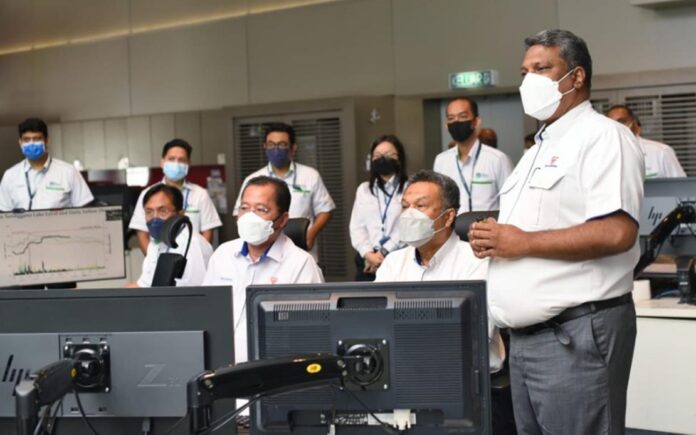KUALA LUMPUR, July 3 – Tenaga Nasional Bhd’s Sultan Mahmud Power Station (SJSM) in Kenyir, Hulu Terengganu, has resumed full operations on June 26 — three months ahead of schedule — after being shut down since Feb 27 this year due to a landslide caused by heavy and continuous rain.
The electric utility company said all four 100-megawatt (MW) hydro turbine units are back in operation, generating power to the national grid.
A week earlier, on June 19, TNB president and chief executive officer Datuk Baharin Din had officiated the recommissioning of SJSM’s units 1 and 2 from the National Load Dispatch Centre at the company’s headquarters in Bangsar, Kuala Lumpur.
““We hope these four units, with a total capacity of 400MW, will continue to operate and produce green energy for the benefit of all Malaysians,” Baharin said in a statement today.
SJSM is able to generate an average of 1,600 gigawatt-hours per year when operating at full capacity, thus avoiding 537,600 tonnes of carbon dioxide emissions if power were generated from fossil fuel (gas), which is equivalent to the carbon emissions from 116,869 vehicles on the road annually.
The same amount of energy generated by hydro could avoid fuel costs by an estimated RM463 million a year if the energy was generated from coal, which saw its prices escalating due to the fuel crisis triggered by post-pandemic demand and the Russia-Ukraine conflict.
Therefore, the restoration of SJSM further strengthens TNB’s green energy generation via three hydroelectric schemes: the Hulu Terengganu hydroelectric scheme in Terengganu, Cameron Highlands in Pahang, and Sungai Perak in Perak.
TNB said it is also developing a fourth hydroelectric scheme in Nenggiri, Gua Musang, Kelantan, which is expected to be operational in 2027 with a capacity of 300MW.
















